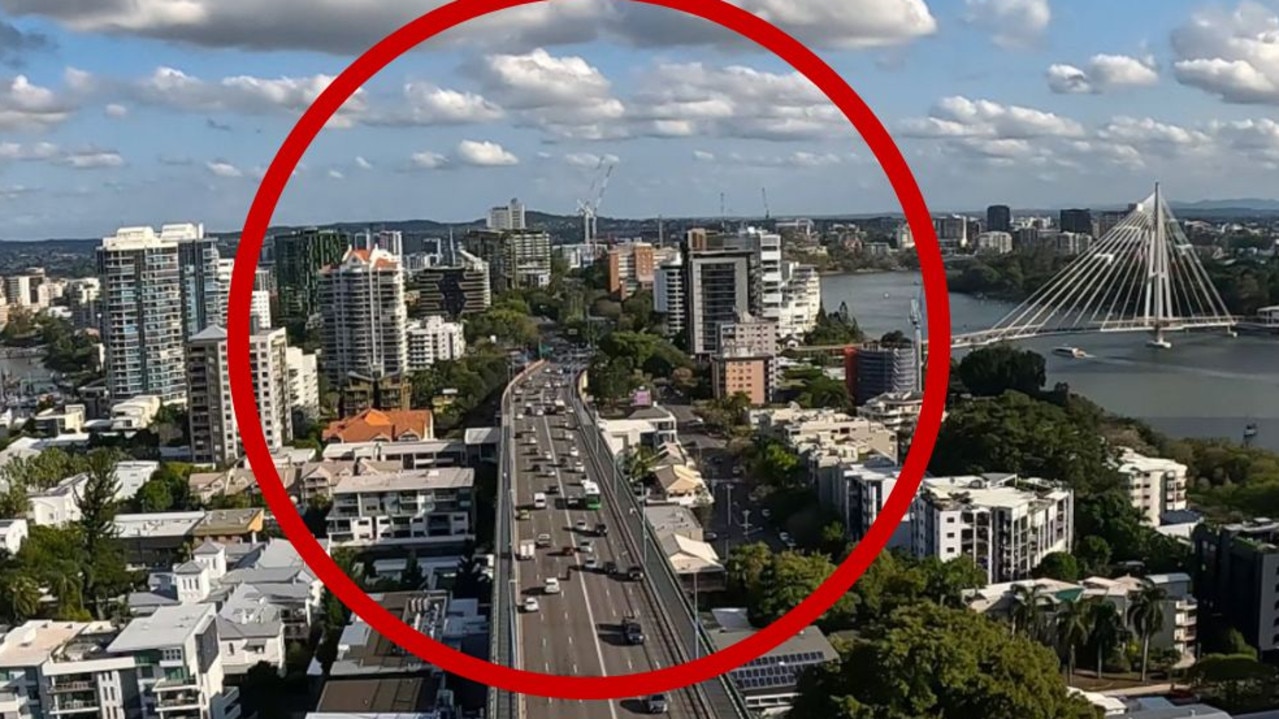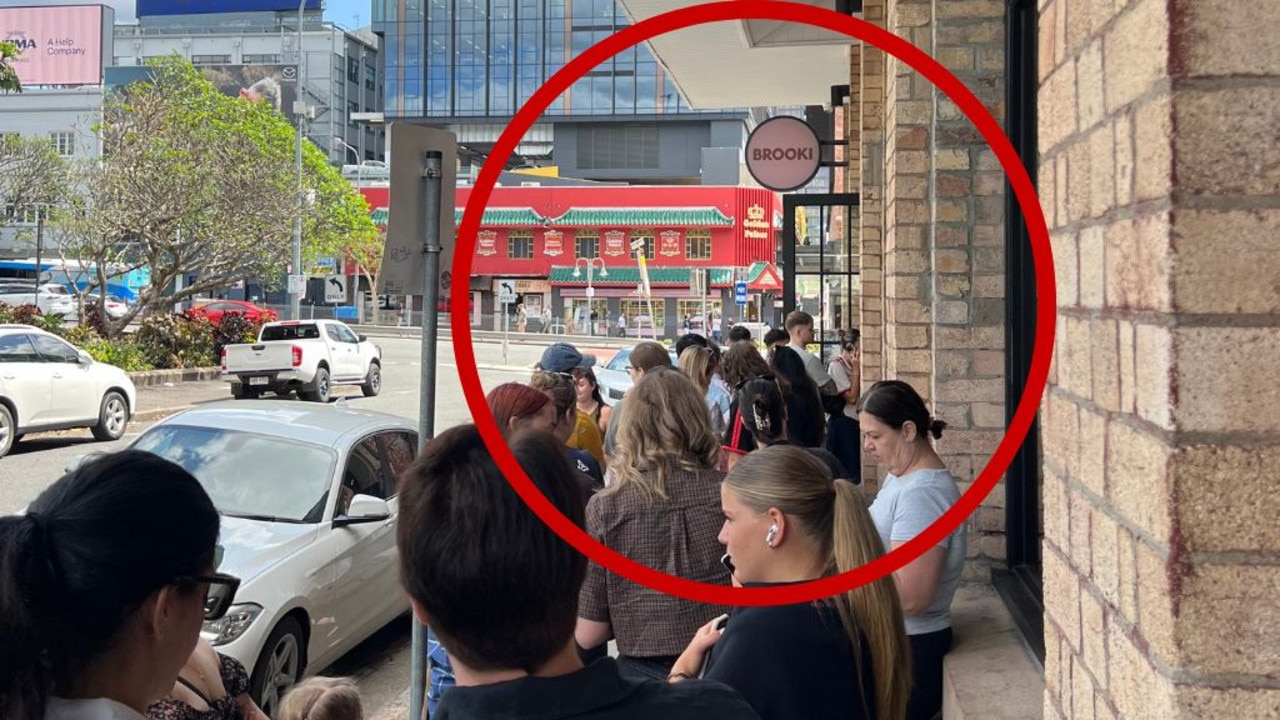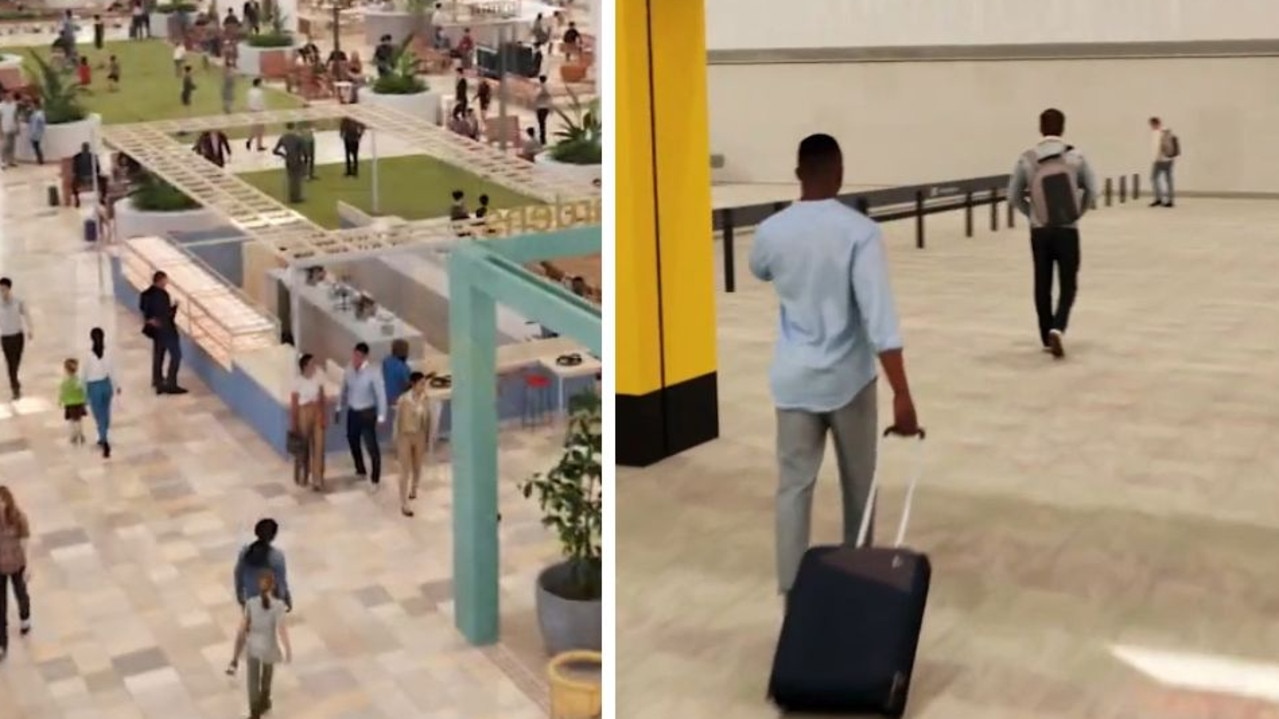Brisbane Airport’s new runway months away from being finished
An Aussie airport is months away from adding on a new billion-dollar runway to cater for dozens more flights. And people aren’t happy about it.
Driving down the streets of Ascot in Brisbane, where tree-lined streets shade the suburb’s sprawling heritage mansions and trendy cafes buzz with young, wealthy families, there’s one thing that immediately sticks out — it’s quiet.
Ascot’s tranquillity as well as its proximity to the scenic Brisbane River, made it the most expensive place to buy a place in the Queensland capital earlier this year, with the suburb’s median house price hitting $1.6 million.
But mid-next year, tranquil Ascot, along with a handful of other exclusive and expensive suburbs will be quiet no more.
By May, construction on Brisbane Airport’s second runway is expected to be complete.
And the new runway, which has been years and billions of dollars in the making, will put some of the Queensland capital’s most expensive and exclusive suburbs directly under the flight path.
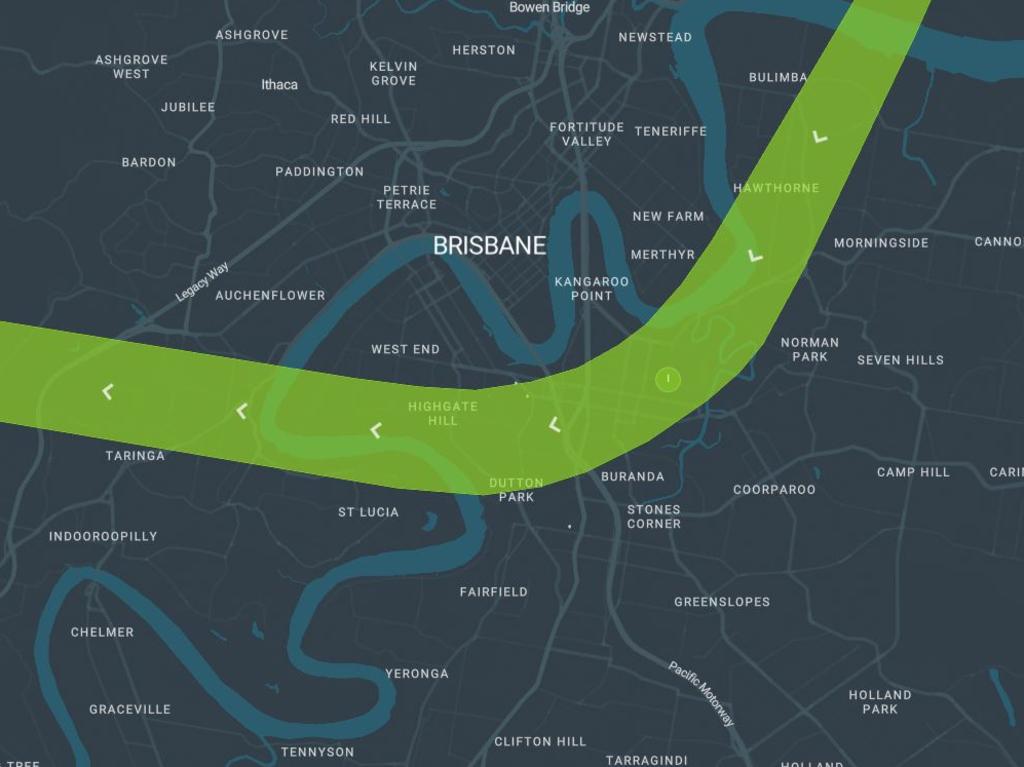

As dozens of aeroplanes from around the world get ready to grace the tarmac, residents in some of the city’s priciest suburbs could be left with a noisy headache.
But not everyone is sympathetic to the plight northside Brisbane locals are about to face, insisting they’ll “get used to it”.
Balmoral and Bulimba locals, where planes flew low before the Gateway Bridge was built, took to social media to joke about the increased flights.
“All good. The people who live in the exclusive and expensive suburbs are more likely to be frequent flyers, so it’s fair enough,” Paul Vint said.
“LOL, the poor diddums. We have low flying planes fly over each day; we got used to it,” Jean Metzenheimer added.
“Suck it up northside. Us southsiders have had it for years. Deal with it,” Marilyn Bliss said.
But despite the jokes, the transition from one runway to two — which will one day give Brisbane Airport a greater capacity than Sydney, Hong Kong and even Singapore’s Changi Airport — has the potential to be a painful one.
Over the next 30 years, Brisbane Airport will double its movements from 50 an hour to 110.
The $1.3 billion second runway is expected to shoulder much of that, creating a handful of new flight paths over Brisbane.
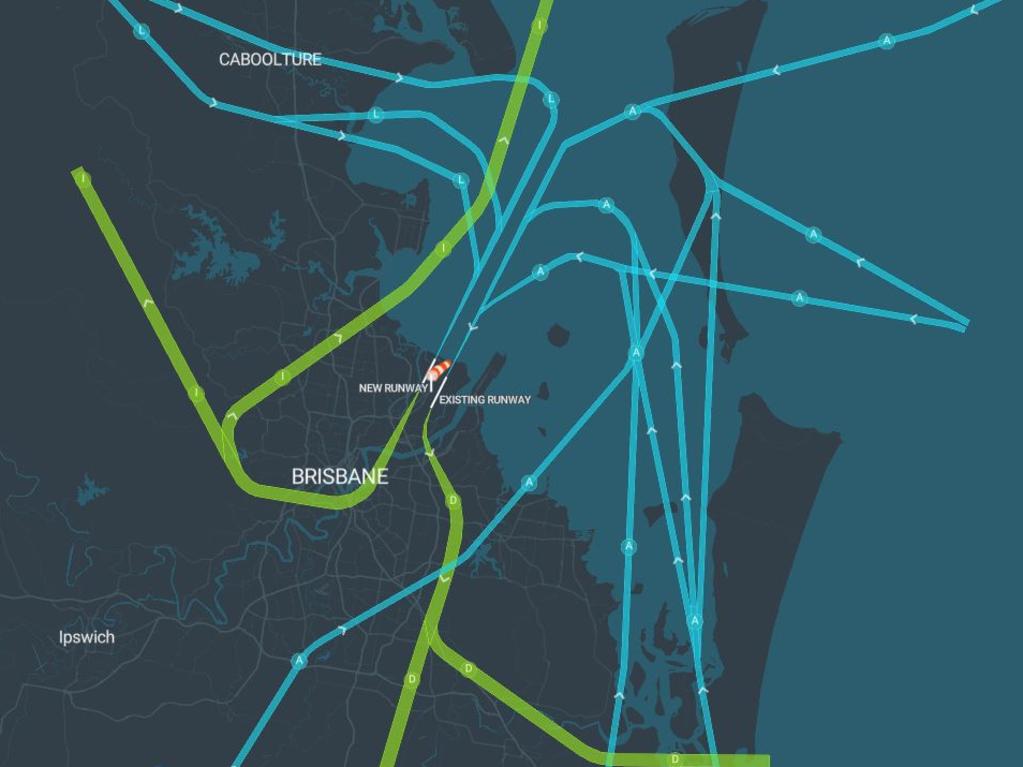
Flights taking off from the new runway will fly over Hamilton and Portside before passing over Bulimba and New Farm and turning back to the city to St Lucia.
The airport also recently unveiled a highly specific tool to help Brisbane residents search exactly when and how often their home will be affected.
The flight path tool also shows noise mapping, highlighting areas affected by aircraft noise of 70 decibels or more.
Using the tool, it is clear to see what suburbs are going to be worse and better off.
Once the new runway is operational, flight noise will be spread over a much wider area and a curfew from 10pm to 6am has been imposed.
Places such as Bulimba, Ascot, Hamilton, Hawthorne, New Farm and Newstead will be significantly affected having previously been immune from aircraft noise.
More than 50 flights above 70 decibels a day will be introduced to the eastern parts of Hamilton, not currently in the flight path.
Fairfield, Moorkooka, Annerley, Dutton Park, East Brisbane and Woolloongabba will also fall directly under the new flight path.
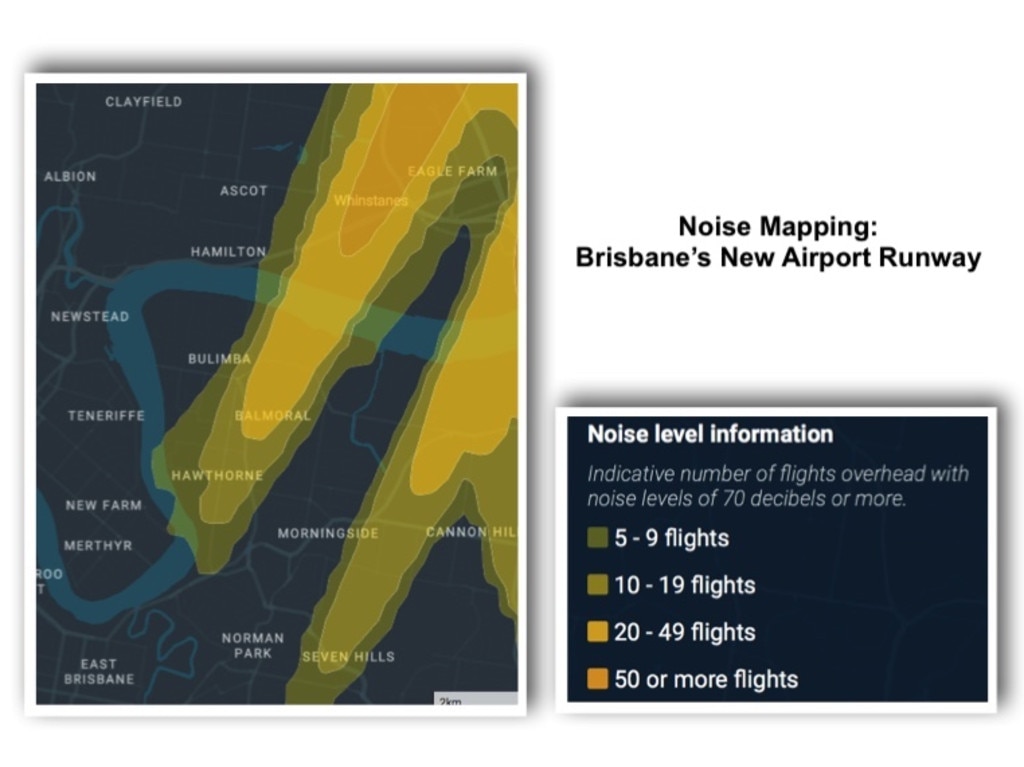
Residents in the affected suburbs are already beginning to speak up — especially on social media.
In a video showing how planes would land on Brisbane’s new runway, people sounded off in the comments.
“They missed out the bit where it comes in low over my place on the other side of the river, shaking the whole house and frightening visitors into thinking there’s an earthquake,” David Fittsell said.
“How about you employ modern techniques for noise reduction on the new runway BAC,” Mark Venz added.
The airport’s corporation (BAC) has been on the front foot for decades, setting up a consultation group for the public in the mid-2000s.
The parallel design of the runway means more flights will come and go over Moreton Bay rather than the city, and the airport also has a 6km buffer zone — the largest of any major Australian airport.
The buffer zone restricts residential development around the airport for 6km.
The BAC will also use a mobile van over the next 12 months to educate residents who are in the new flight path.
Brisbane locals seem overwhelmingly excited and welcoming of the new runway.
Considering the runway is expected to create 7800 new jobs, give the Brisbane economy an annual $5 billion boost and allow the airport to host a whopping 50 million passengers by 2040, it’s easy to see why.
Real Estate Australia chief economist Nerida Conisbee said the new runway could mean only good things for Brisbane, cementing the Queensland capital as a “global city” and creating thousands of jobs.
“Melbourne and Sydney have very high global profiles,” she said.
“Sydney, from an international perspective. Melbourne, particularly in Asia. If people can get to Brisbane much more easily than they have in the past, of course it’s going to raise its profile.”
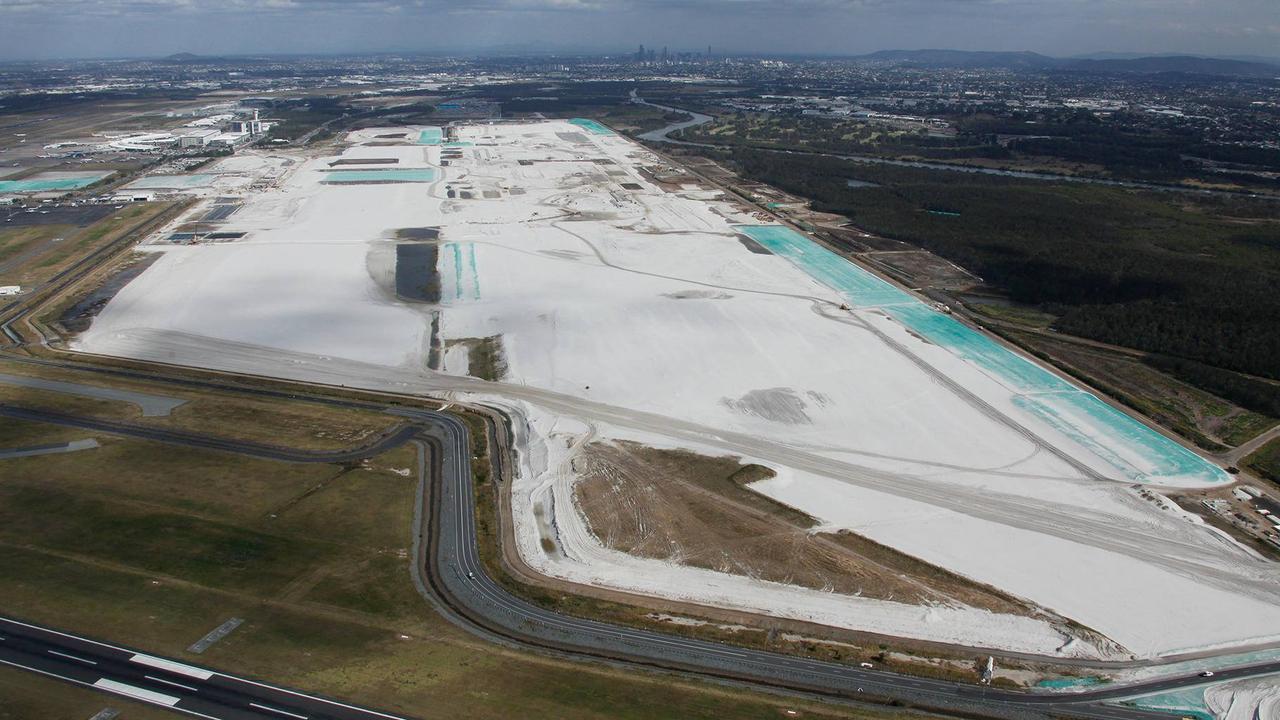
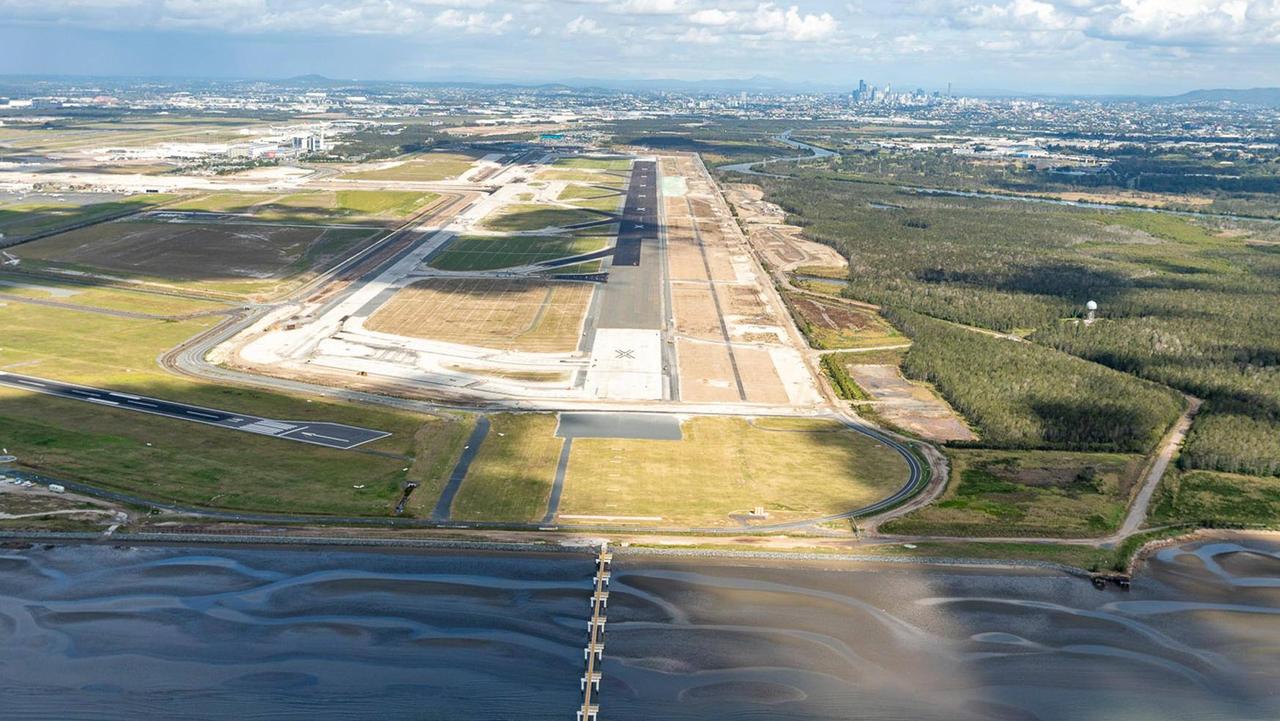
A study completed by the Queensland University of Technology (QUT), which studied real estate data from the past 25 years across 42 suburbs, also found the new runway would have little impact.
“Housing and units in Brisbane located under designated flight paths have their value and price determined by a range of factors and these factors are not detrimentally impacted by aircraft noise,” the QUT study concluded.
“The location of a property under a flight path will have minimal if any impact on the price, saleability, investment performance and capital growth of that property.”
QUT property professor Chris Eves said the sales were the same, regardless of runways.
“It doesn’t mean that property (subject to aircraft noise) is any easier or harder to sell — sales volumes are almost exactly the same,” Prof Eves said.
“In all the studies I’ve done on aircraft noise in Melbourne, Sydney, the Gold Coast, the results have been similar.
“The capital growth of property has been more aligned with social economic status and locational factors than any perceived detrimental factors.”


